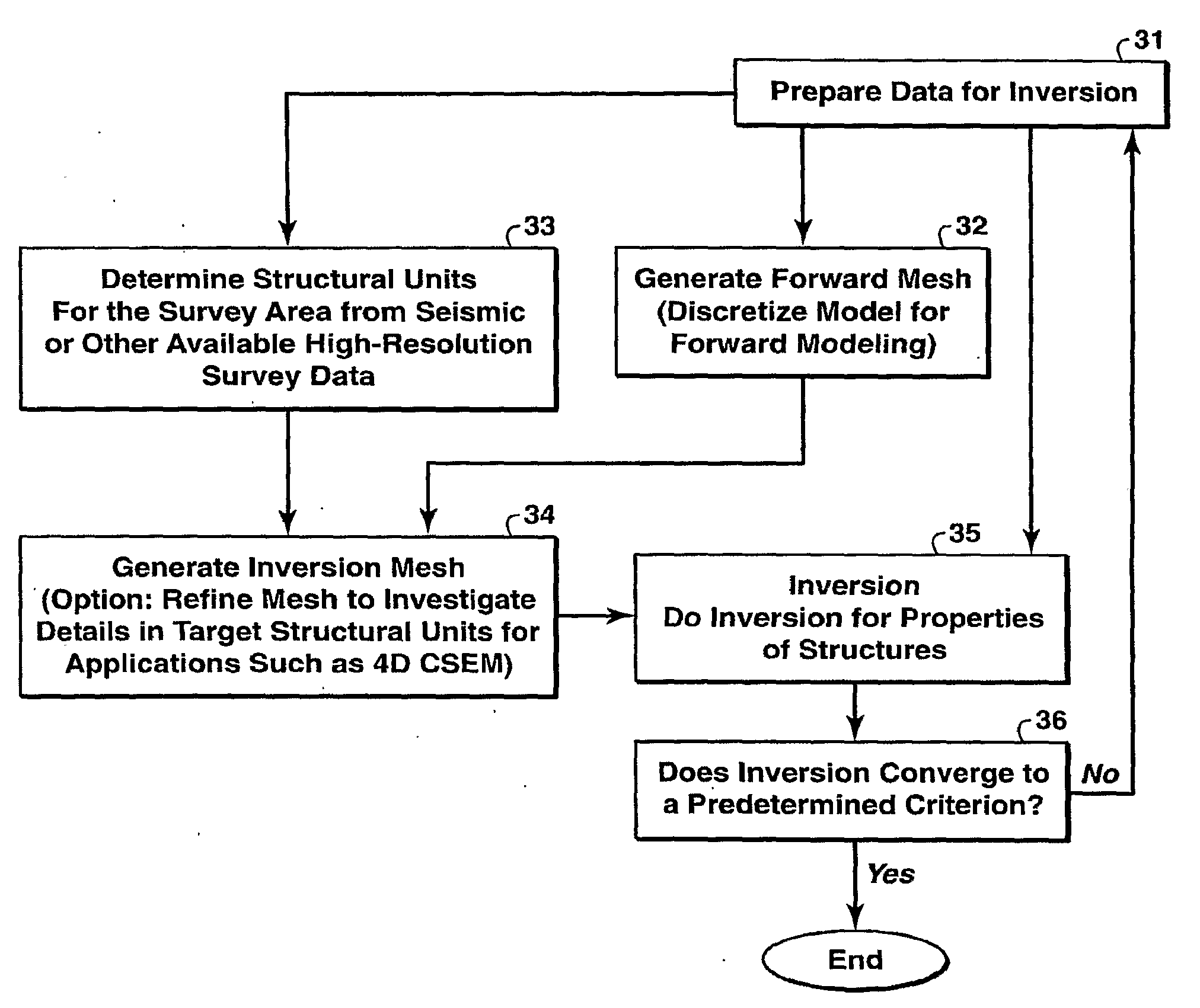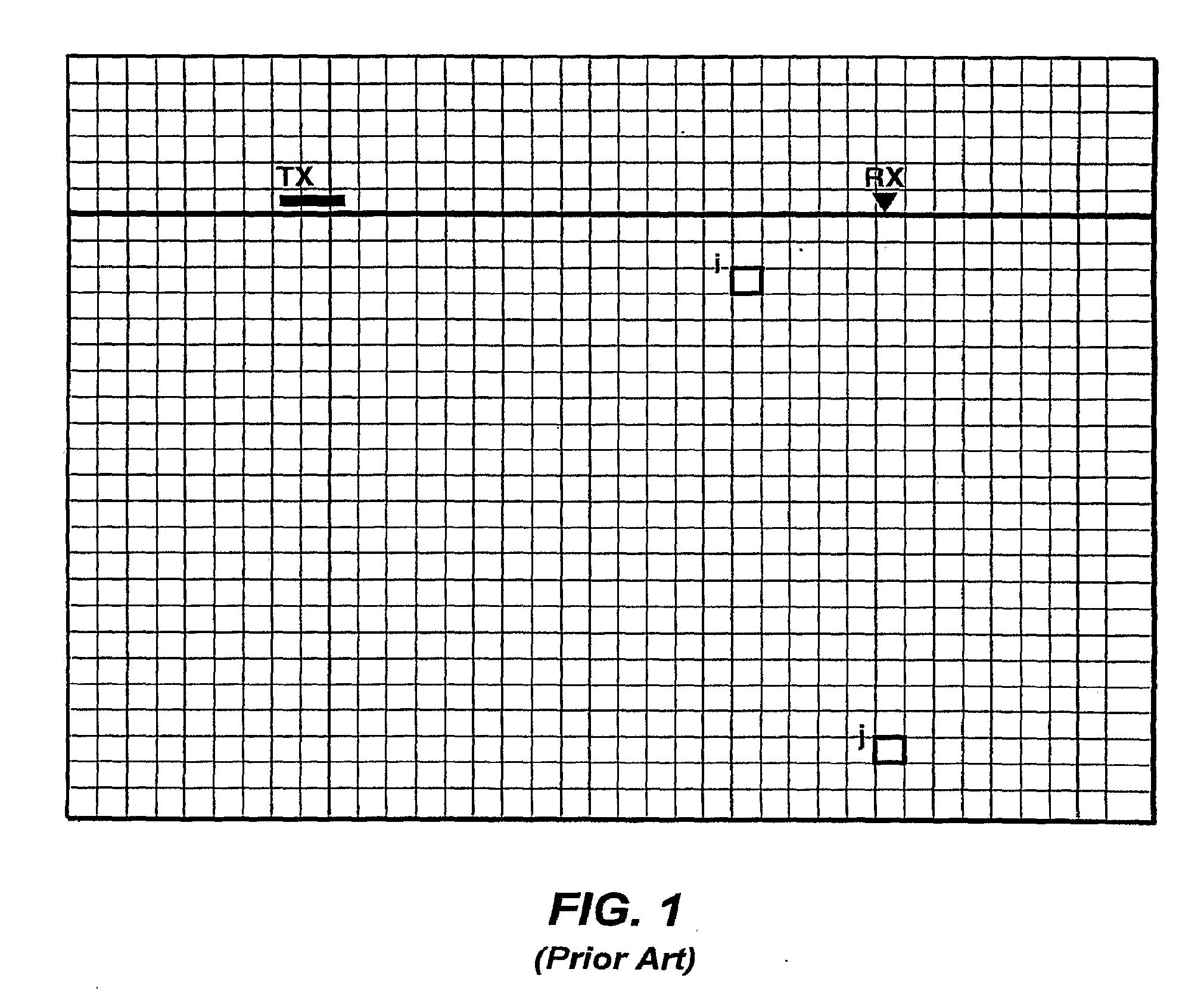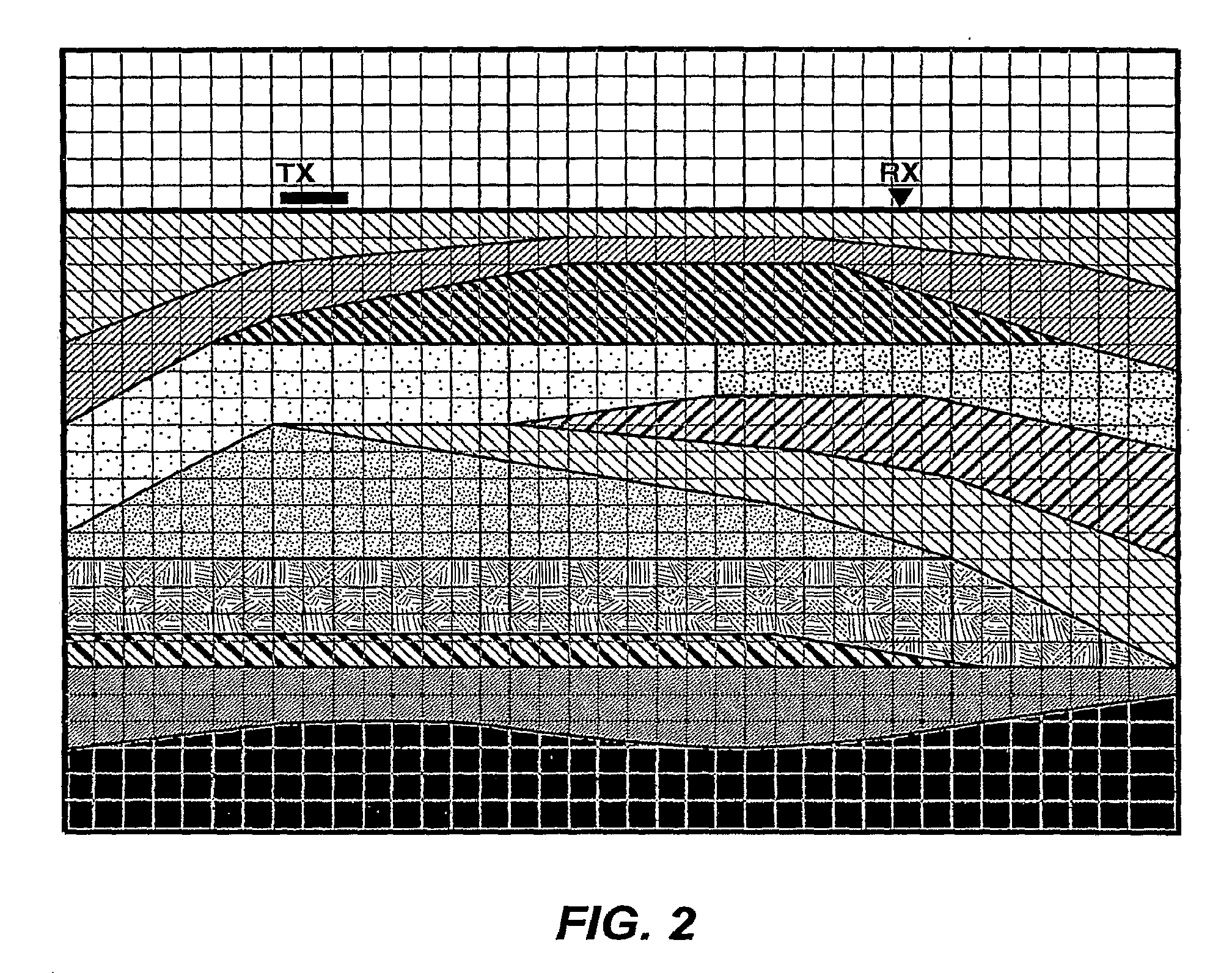Method For Determining Physical Properties of Structures
- Summary
- Abstract
- Description
- Claims
- Application Information
AI Technical Summary
Benefits of technology
Problems solved by technology
Method used
Image
Examples
examples
[0045]A number of models were tested using 1D inversion. FIGS. 4A-B show inversion results from conventional CSEM data inversion, at which model discretization is fine enough in order to recover structures as well as resistivities. For FIG. 4A, the EM data corresponding to source frequencies of 0.5, 0.25 and 0.125 Hz were selected in step 31 for inversion. (Because inversion involves forward modeling, which must be performed at a single frequency, the EM data are decomposed by Fourier analysis or other method to the frequency domain, where the data components corresponding to the different frequencies in the source waveform's frequency spectrum are separated from one another.) For FIG. 4B, the same three frequencies were used, but in addition the data corresponding to three more frequencies were also inverted: 2.0, 1.0 and 0.0625 Hz. (The more data used, the better the result that can be expected, but the trade-off is that more computer time and / or resources are needed.) In both dra...
PUM
 Login to View More
Login to View More Abstract
Description
Claims
Application Information
 Login to View More
Login to View More - R&D
- Intellectual Property
- Life Sciences
- Materials
- Tech Scout
- Unparalleled Data Quality
- Higher Quality Content
- 60% Fewer Hallucinations
Browse by: Latest US Patents, China's latest patents, Technical Efficacy Thesaurus, Application Domain, Technology Topic, Popular Technical Reports.
© 2025 PatSnap. All rights reserved.Legal|Privacy policy|Modern Slavery Act Transparency Statement|Sitemap|About US| Contact US: help@patsnap.com



